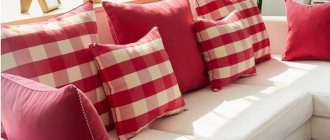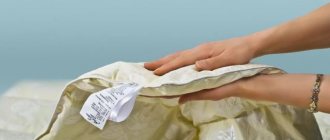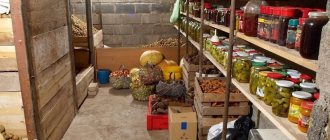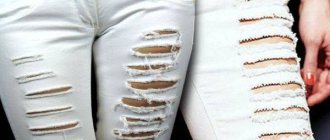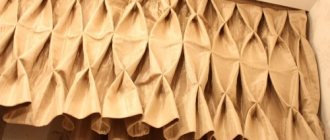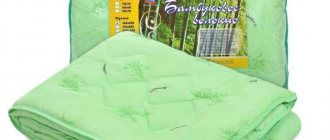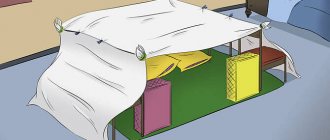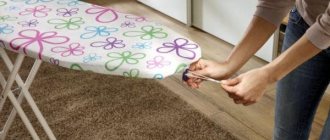With the arrival of a child in the family, caring mothers and fathers try to get the best for him. Young mothers prefer to make certain things themselves. It is not difficult for novice needlewomen to sew a baby blanket with their own hands, showing a little creativity.
Personalized baby blanket for a girl with your own hands - beautiful, stylish and comfortable
Cutting out a blanket
Take measurements before cutting. Dimensions are taken depending on the size of the crib and the purpose of the blanket. To make it gracefully hang from the crib, add an allowance of 15-25 cm to the width and length. There are standard sizes of blankets:
- 90x120 cm;
- 110x140 cm;
- 143x215cm.
There are non-standard sizes:
- 90x90 cm, blanket for stroller, cradle;
- 120x120 cm, blanket for discharge from the maternity hospital, for walks;
- 150x130 cm, blanket - sleeping bag in the shape of a bag, then useful as a simple blanket.
Make a quilt pattern by drawing a rectangle from your measurements, with a 1.5cm seam allowance on all four sides.
Algorithm for creating a blanket
To simplify and speed up the process of work and description, this article describes the process of creating a baby blanket measuring 100*140cm.
Related article: Knitting a women's cardigan with patterns and descriptions
To create a blanket you will need:
- 96 scraps of complementary fabric (for children it is better to sew not bright blankets, because otherwise they can interfere with the process of going to bed) measuring 12*14 cm, taking into account seam allowances;
- 1 square for the center with a side of 22 cm;
- 20 square flaps with a side of 25 cm for the wrong side;
- padding polyester;
- threads and needles;
- sewing machine;
- decorative elements.
After preparing the material base, you can move on to the process of creating a blanket.
- You need to lay out all the scraps on a flat and smooth base and sew them together into strips.
- All seams must be ironed.
- The finished strips are ground together. The resulting seams are ironed again.
- The reverse side is sewn from squares with a side of 25 cm in a similar way.
- The padding polyester is sewn to the front and back of the blanket.
- The back and front elements of the future blanket are applied to each other, stitched and ironed.
This completes the main stage of making a quilt for a newborn baby.
To add originality, the quilt can be complemented with embroidery or ribbons, or you can add appliqués, as shown in the photo.
Necessary materials
Choose fabric according to the following criteria:
- wear-resistant and durable, able to withstand repeated washing;
- natural and with antistatic effect (chintz, calico, linen, silk);
- not cause allergies in the baby;
- without toxic dyes;
- all layers must allow air to pass through well.
For the bottom of the blanket, choose a cotton fabric. It is absolutely natural, breathable, but not wear-resistant. Silk and twill are soft to the touch, but require very delicate care. The most acceptable options are cambric, satin, fleece, flannel, calico, bamboo fabric, which meets all the specified criteria. The top part of the blanket can be sewn from any fabric, as long as it is soft and natural.
The following fillers are used.
- Downy – lightweight; soft; air circulates through it, but clumps; it has a characteristic smell.
- Sherstepon – soft; absorbs moisture well and remains dry; It is not recommended to machine wash.
- Sintepon - light; does not provoke allergic reactions; washes well; not expensive.
- Hollow fiber – resistant to knocking down; very warm; does not deform during washing; more expensive than padding polyester.
- Bamboo fiber – meets all criteria; crumples.
The most popular types of filler are padding polyester and holofiber.
Calculate the amount of fabric as follows: take two lengths as measured, take into account a seam allowance of 1.5 cm on each side and 10 cm for shrinkage, i.e. total allowance is 13 cm. Calculate the amount of filler depending on the size of the blanket and the number of layers.
For sewing you will also need threads No. 40-60, machine needle No. 90-100, pins.
We sew a blanket for discharge
An original, beautiful, convenient and safe envelope for a newborn's discharge
The topic of how to sew a baby blanket for discharge from the maternity hospital is relevant in cool weather. Festive satin and lace envelopes will not work. For this purpose, a transformable blanket is sewn using the same method as a regular quilt on padding polyester. Sew two main parts of the blanket measuring 46x85 cm and 46x60 cm, two side flaps measuring 20x70 cm. Fasten the two main parts and two side flaps to the bottom of the blanket with Velcro, or sew satin ribbons. The top of the blanket can be decorated with lace or pleated ribbon. This blanket can easily be converted into a regular stroller blanket.
DIY baby blanket
I propose to sew a baby blanket for a newborn and two small pillows for it.
For this product I take the main fabric - polycotton. For thickness, I use and recommend holofiber, but you can also use padding polyester. My blanket will not be very thick and warm - one layer of holofiber. In general, the thickness can be made according to your taste and desire. This can be done by a seamstress who already has some experience, a little patience and 2 - 2.5 hours of time. In the description of sewing, I will use my photographs of the sewing process. On my website I already have an article on sewing a baby blanket with a simpler stitch and a detailed description of the sewing technology. I advise you to familiarize yourself with it. Those interested can watch my video tutorial on sewing a blanket: RECOMMENDED FABRICS – calico, polycotton with a children's pattern.
Consumables:
Polycotton - for a blanket and 2 pillows - 3 m (for a blanket without pillows - 2 m) with a fabric width of 1.5 m.
Hollow fiber or padding polyester, 1 cm thick (100) - 1 m x 1.5 m.
Lace – 10-12 m, 2-3 cm wide.
Sewing threads No. 40-60, sewing machine needle No. 90-100, tailor's pins.
I recommend making an unusual blanket stitch in the form of quilted flowers and leaves. This blanket will be for a newborn girl, so I selected the color of the fabric and the shape of the stitching patterns accordingly.
I recommend making patterns for quilting in the same way as patterns on plastic film. The drawing must be drawn with a thin marker. The dimensions of the patterns should not be too small; we must not forget that we will need to stitch along their contour. I came up with patterns: a flower 35-40 cm in diameter with several large petals, and a leaf 30 cm long and approx. wide. 15 cm. I made the patterns for myself on cardboard, because I often get asked to sew a blanket for a child, but you can also leave the plastic ones.
CUTTING AND HINTING
The size of the baby blanket that I will sew with my own hands will be 1m x 1.5m. This size fits well into a crib.
Cut 2m from a total piece of fabric. Cut it in half and you get 2 pieces of 1m x 1.5m. Place one piece on a large table. Apply the patterns and trace with chalk on the front side of the future blanket. The drawing can be done to your taste. Mine turned out to be asymmetrical. I recommend not making the distance between the parts too large and not too small, approximately 20 or 25 cm. You can use a circle that was cut out from the middle of the flower.
SEWING
Sew lace along the entire perimeter of the chalked part of the blanket, along the edge. For beauty, I occasionally make small folds by eye.
Place the prepared holofiber on the table. On it, place both pieces of the main fabric with the right side inward, where there is already a chalk mark for the design. Pin the blanket together with needles, most of the needles along the edges.
Using a sewing machine, we sew a line along the lace stitching line. Leave an inversion hole on one edge, approximately 20-25cm.
Then remove the needles and turn out the resulting blanket.
Place it on a large table, chalked side up, and pin the entire blanket very well (pin through all layers). Here it is advisable to use as many pins as possible.
BLANKET STITCH
In order to quilt a blanket on a machine, you need to loosen the presser foot so that the blanket passes through more easily. The stitch size can be set to the coarsest pitch. I use contrasting green thread. We lay a machine stitch along the chalk lines. When stitching, it is very important that all layers of the blanket move evenly, without distortion. To do this, you need to help move it with your hands. I would like to note that a machine needle will never break if you sew along a perpendicularly inserted pin.
Sew up the inside hole and remove all the pins. A hand-sewn baby blanket for a newborn is ready. Be bolder, more confident and you will succeed!
CUSHIONS
From the remaining fabric, sew pillows measuring 50x50cm. To do this, you need to cut out four pieces of the required size. You can put crushed pieces of holofiber or padding polyester inside the pillows. More detailed technology for sewing pillows can be found in my article.
We sew a patchwork quilt with our own hands
Technique for creating a “Watercolor” blanket - combining square patches in the same color scheme, creating smooth transitions
The “Honeycomb” technique is suitable for a blanket made of hexagonal patches in any color scheme
Patchwork is very popular. This is not only an opportunity to use unnecessary scraps of fabric, but a fashionable interior accessory. Unique creations are created from scraps of fabric with figures of animals, cartoon characters, ships, flowers, fruits, etc. It's good to use old, bright children's clothes.
Patchwork technique “Checkerboard” - a blanket made of squares in two colors
The “Stripes” technique is suitable for narrow pieces - instead of squares, strips are used, sewn in a chaotic order
Patchwork Blanket Starter Kit
To sew a patchwork blanket you will need the following kit.
- Pieces of multi-colored fabric with different patterns.
- Fabric for the bottom of the blanket.
- Filler, for example synthetic winterizer.
- Sewing threads of different colors to match the shreds.
- Sewing machine.
- Iron.
- Ruler.
- Scissors or rotary cutter.
- Pins.
A patchwork blanket can be sewn from scraps of various shapes: square, diamond, triangle, stripes. Squares can be of different sizes. The pinnacle of craftsmanship is considered to be the creation of patchwork from a chaotic mixture of scraps. Sometimes this takes many months.
Sew a bonbon blanket
The “Bonbon” blanket is originally a decorative element of the style, the origin of which is based on the patchwork technique.
The bonbon blanket is a version of patchwork. Sewing it seems incredibly difficult at first glance. It is warm, unusually beautiful, bright. For it, one-color and multi-colored scraps are taken, forming a mosaic. The base fabric is drawn into squares with a side of 11 cm. Cut square pieces with a side of 17 cm are sewn into horizontal stripes, like in a patchwork blanket. The strip is sewn to the base as follows: using pins, the squares of the scraps are secured to the vertical lines of the base fabric, and a fold of excess fabric is placed in the middle of the square for lifting. The resulting voids are filled with holofiber, the squares are attached on three sides to the main fabric using a machine. The following rows are sewn to the bottom edge, continuing until the entire length is filled. The edges of the product are finished with bias tape.
Blankets of this type are sewn from separate ottoman pockets filled with holofiber
Volumetric option
A special place among quilts is occupied by the voluminous patchwork blanket. You will hardly find anything sweeter and warmer for the interior design of your home.
Despite the apparent complexity, such a blanket can be made even for beginning craftswomen. The technique for making it is in many ways similar to the technique described above for creating a standard quilted blanket. The main difference is the stuffing process.
In a simple quilt, you stuff the finished product during the final stages of the creation process. A voluminous blanket is stuffed at an intermediate stage.
Going into detail, it looks like this:
- square flaps of the same size are prepared for the front and back sides;
- the back and front flaps are stitched on three sides;
- through the fourth side the flap is filled with printed material (sintepon, down, batting, etc.);
- the fourth side of the flap is sutured;
- the stuffed squares are folded onto a flat, smooth surface into a single sheet.
Related article: Box made from tape reels: master class with photos and videos
- squares with padding are sewn together.
The voluminous quilt is ready.
In addition to blankets, other products can be made using this technique. Most often, volumetric flaps are used to create children's play mats and sides for cribs.
It is worth noting that a quilted blanket does not have to be sewn using the patchwork technique from different scraps of fabric. A quilt would also be considered a blanket made from a single piece of fabric that is stitched using various patterned stitches.
However, despite its apparent simplicity, this option for making a quilt requires a high level of professionalism of the craftswoman and well-developed technology, since, firstly, the execution will require a specific tool and a more professional sewing machine, and, secondly, they will be very clearly visible on a smooth fabric all the flaws and shortcomings of the production process.
Knitting pattern for a baby blanket
- Cast on 139 loops, tie 5 cm high with a double elastic band. In the first row, alternate 1 knit stitch, 1 purl stitch. In the second row, knit the front loop, remove the purl one, leaving the thread in front of you. In the third row, knit the stitch that was slipped in the previous row, and slip the next one, leaving the thread in front of you. Repeat the pattern from the second row.
- Then knit the first and last loops with a double elastic band, 123 loops in the middle - with fancy knitting according to the pattern. For craftswomen who know how to knit, it will not be difficult to find any knitting pattern they like. Knit like this to a height of 83 cm.
- After this, knit 5 cm with double knitting, finish knitting by casting off the loops of the last row.
Makes a cute blanket for a newborn.
Knitted blue blanket complete with baby hat
This is how you can make a baby blanket or baby blanket with your own hands without spending a lot of money. It will warm you up, come in handy for walks in winter, decorate the interior, and serve as a play mat for your child.
What should a baby blanket be like?
Before choosing materials and sewing, let's figure out what a baby blanket should be like.
Necessary requirements:
- compliance of the product with the season and temperature in the room where the child sleeps: if you choose the wrong blanket, the child may overheat, which can lead to heat rash and poor health, or freeze,
- a suitable size for the child: a product that is too small will not be able to warm the child, it will be uncomfortable for him, since with almost any movement the blanket will slide off, and too large will interfere with the baby’s free movements,
- light weight: a product that is too heavy can make it difficult for the child to breathe and disturb his sleep,
- lack of decorative elements: the child may get entangled in them or damage the skin.
Based on the standard ratio of height and weight of children from birth to 17 years old, you can determine whether increases or decreases are needed when sewing.
I bought my son a couple of blankets measuring 80x80 centimeters for his birth, he slept under them until he was almost two years old, despite the fact that he is very tall for children of his age. Later we bought a blanket 110x150, I think it will last him until he is about four years old. Therefore, in my opinion, all these standard sizes are quite subjective.
Before using the blanket, make sure that there are no threads sticking out anywhere! The baby may cut himself on them.
If the blanket meets all the listed requirements, you can rest assured that your baby will be safe and sleep well.
Table: standard sizes of children's blankets
| Infants (0–1 year) | 80x80 100x135 150x110 |
| Children from 1 year to 12 years | 100x140 120x150 |
| Teenagers 13–17 years old (one and a half years old) | 145x210 160x220 |
